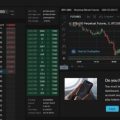The ?️-ratio in investments is called a measure of systematic risk. This may be a separate riskan asset (stocks or bonds), and throughout the portfolio. Do you remember that paper risk is volatility? So the beta coefficient can also be considered a measure of paper volatility.
✅ In the general case, it is generally accepted that the volatility of an asset with B = 1 will be equal to the volatility of the market. The market is growing at 10% - with it growing at the same 10% and the asset. The market is falling - the asset is falling.
✅There are assets with B>1.In this case, their volatility is higher than the market average. For example, Sberbank shares have B = 1.3. This means that if the Moscow Exchange index falls by 10%, Sberbank shares on average fall by 13%.
✅There are also protective assets with B<1.Their risk is less than the market average. During market declines, they help make a portfolio more stable and less volatile. For example, the Beta coefficient of PhosAgro stock is 0.16. By the way, the ETF for Eurobonds of Russian companies SBCB, which is in my model portfolio (https://intelinvest.ru/public-portfolio/46121/?ref=51165), has one of the lowest Beta coefficients. The beta of this security is minus 0.77, which means that this asset most often grows when the market falls. That is why I keep such a security in my portfolio - to hedge risks during the crisis.
❓Where to get Beta values for securities thattraded on Mosbirzhe? You can count yourself, it is useful and uncomplicated. It is considered in Google tables using the SLOPE function, to which you need to transfer the values of the asset's return and the IMOEX index's return. But you can simply find it in the public domain on the Mosbirzi website (https://www.moex.com/en/forts/coefficients-values.aspx). There are data on Beta calculated over the last 30 days.
? Well, the most important question is what is Beta for andhow can an ordinary investor use it? It's simple: a high Beta portfolio is growing, a low Beta portfolio is defensive. In a period of recession and high volatility (like now, for example) we add securities with low Beta to the portfolio in order to reduce losses. During the growth period, we take assets with a high Beta and increase the portfolio yield. Personally, I recalculate the Beta of the portfolio every time I plan to add new stock to it. Thus, I determine how the portfolio profile will change from the inclusion of a new asset in it.
</p>



